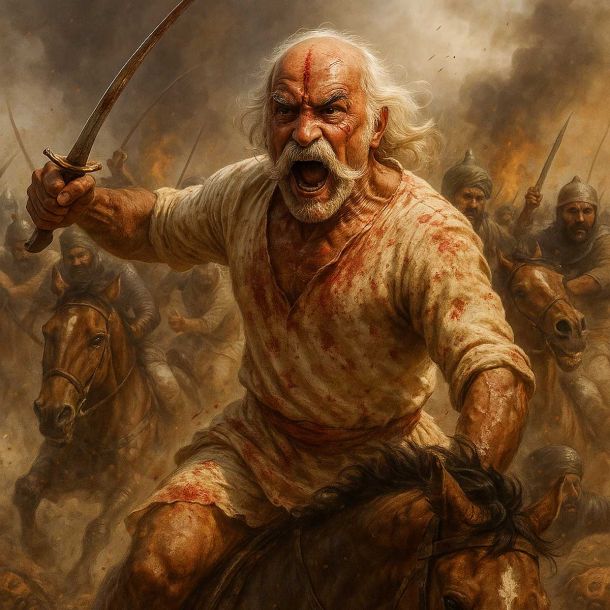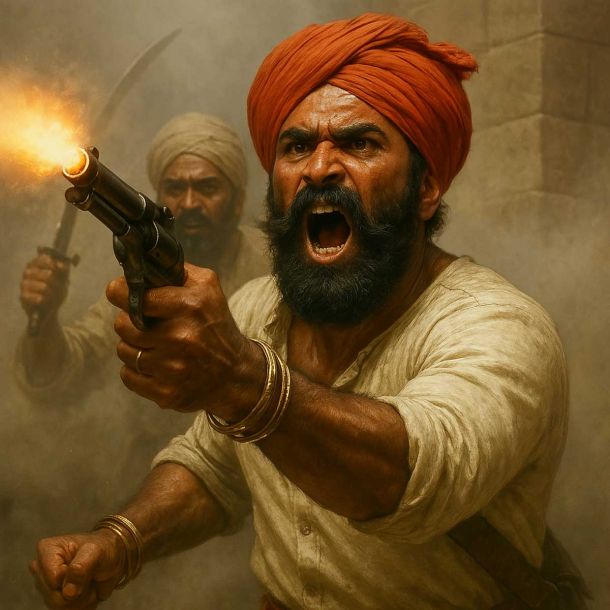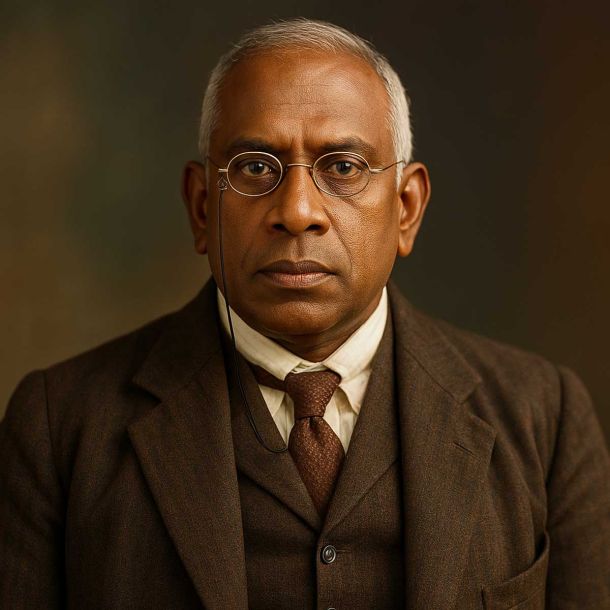MORE COVERAGE
The Emergency: JP recited Dinkar evocative poem, ‘Singhasan khaali karo, ke Janata Aati hai’, Harvard-returned Subramanian Swamy and member of Rajya Sabha presciently speculated, ‘What if Mrs. Gandhi introduced martial law’

25th June 1975 was a sweltering day, made more uncomfortable by the frequent power breakdowns at the Indian Express office at Bahadur Shah Zafar Marg, Delhi’s Fleet Street. When the lights came on by 8 p.m., I left the office, oblivious to the fact that the blackout was just a dress rehearsal and that a coup was in the works a couple of kilometers away. The restoration of electricity was temporary—the newspaper would be in the dark for a long time to come.
The lead headline for the next morning’s edition was to be the anti–Indira Gandhi rally held that evening at Delhi’s Ram Lila Maidan, with Jayaprakash Narayan (JP) as the main speaker. The Gandhian Sarvodaya leader, who had launched a campaign against corruption and misrule in Bihar and at the Centre, had given a call for ‘Total Revolution’, which had captured the imagination of the youth of north India, particularly in Bihar.
JP’s campaign against Mrs. Gandhi had gained additional momentum on 12th June. On that day, Justice Jagmohan Lal Sinha of the Allahabad High Court disbarred the prime minister as a member of Parliament (MP) for election malpractices, and from holding any elected post for 6 years. Mrs. Gandhi had appealed against this ruling, but the vacation judge of the Supreme Court, Justice VR Krishna Iyer, had on 24 June refused to grant a complete stay to Mrs. Gandhi on her petition. He ruled that she could continue as prime minister till the matter was decided by the Supreme Court, but she did not have the right to vote in Parliament. It was a decision that made Mrs. Gandhi’s position very vulnerable.
The feisty Indian Express owner, Ramnath Goenka, a close friend of JP’s, was the media adviser for JP’s campaign. He was, in fact, an important strategist for the diverse political groups that had hitched their wagon to the JP movement: the Congress(O), the Bharatiya Lok Dal (BLD), the Socialist Party, and the Bharatiya Jana Sangh. The Congress(O) was the faction of the party which had tried to expel Mrs. Gandhi in 1969 and had then been largely marginalized by her. The BLD was headed by the dour peasant leader Charan Singh. C
Rajagopalachari’s Swatantra Party, which stood for free enterprise and free trade, had merged with Singh’s BLD which represented the farmers of north India. The Jana Sangh was a right-wing pro-Hindu party with close affiliation to the Rashtriya Swayamsevak Sangh (RSS). A solid phalanx of humanity covered the historic Ram Lila grounds on the night of 25th June, endorsing the call for Indira Gandhi to step down. JP recited Ramdhari Singh Dinkar’s evocative poem, ‘Singhasan khaali karo / ke Janata Aati hai’ (Surrender your throne, for the people are coming), to thunderous applause. The crusty septuagenarian Morarji Desai from the Congress(O), who had come out of semi-retirement to spearhead the agitation to get rid of the corrupt Congress chief minister of Gujarat, Chimanbhai Patel, was on the dais.
So was Raj Narain, the maverick wrestler-politician — it was he who had set the wheels in motion against Mrs. Gandhi by filing a case against her in the Allahabad High Court for electoral malpractices in her constituency of Rai Bareilly, where he had contested against her. The RSS pracharak (crusader) and Jana Sangh strongman Nanaji Deshmukh and the Delhi Jana Sangh boss, Madan Lal Khurana, were also present.
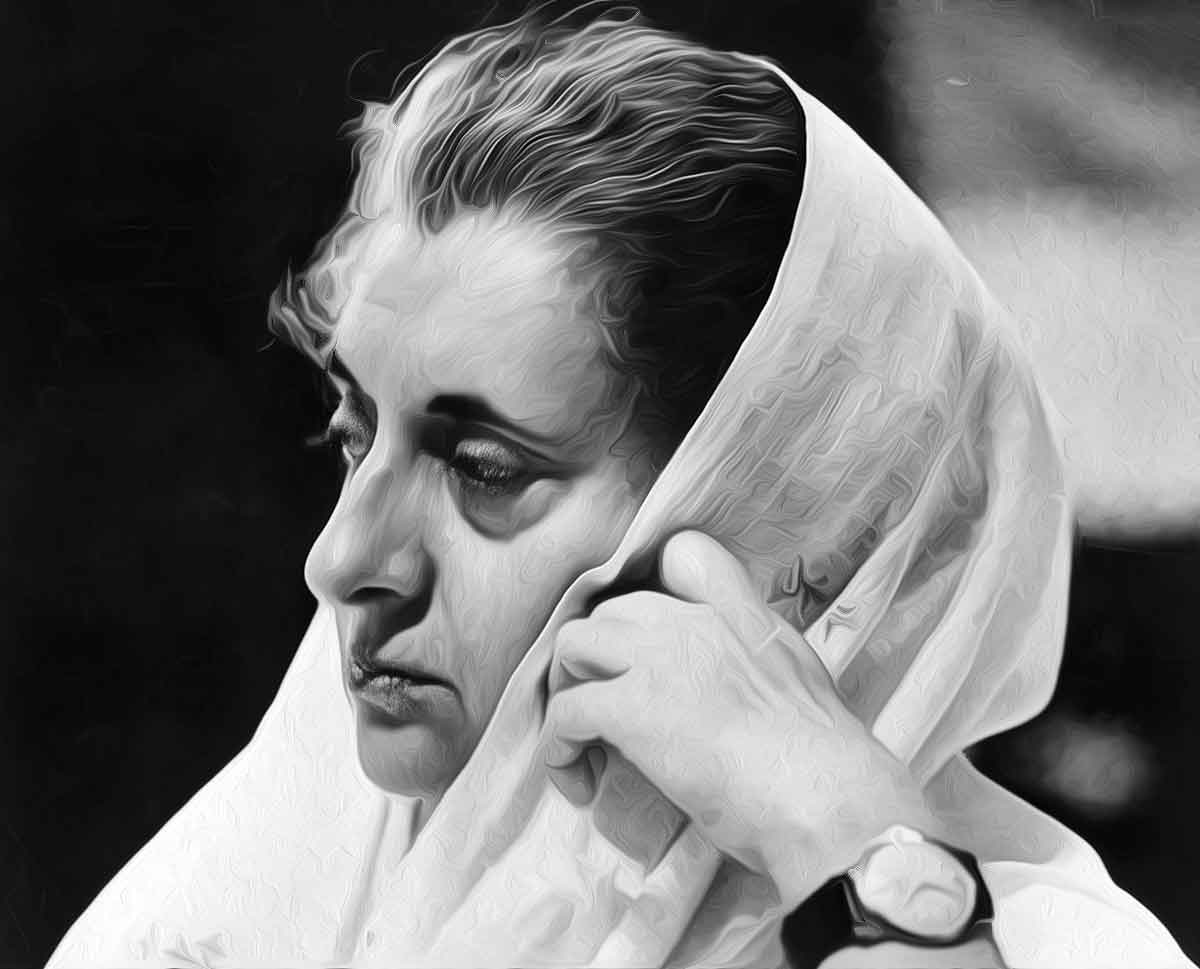 |
Earlier that evening, Subramanian Swamy, the Harvard-returned, newly elected Jana Sangh member of the Rajya Sabha, had been tasked to bring JP to the Ram Lila Maidan from the nearby Rouse Avenue office of the Gandhi Peace Foundation. With the growing groundswell of support for the call to remove Mrs. Gandhi, Swamy had ominously and (as it would turn out) presciently speculated: ‘What would happen if Mrs. Gandhi introduced martial law?’ JP laughed and dismissed his fears: ‘You are too Americanized! Indians would revolt.’ Seeing the huge crowds that turned up to hear him wherever he addressed rallies in the country, JP believed he had unleashed a people’s movement which was unstoppable till it had achieved its goal.
Biju Patnaik, BLD leader from Orissa, who had once been close to the Nehru – Gandhi family, was, like Swamy, also apprehensive about Indira Gandhi’s reaction. Two days earlier, at a conference of all the opposition parties supporting JP, which had been convened to work out the modalities of organizing a national satyagraha on 29th June, he had warned, ‘I know Indira Gandhi well. You must give her an exit route; if you completely corner her then in a panic she may overreact.’
At the rally on the night of 25th June, JP declared that there would be nonviolent demonstrations and satyagrahas to compel Indira Gandhi to resign. JP’s words were later quoted repeatedly by Mrs. Gandhi to justify the Emergency. But, in fact, preparations for putting her political opponents behind bars and stifling all expressions of dissent were being planned for many months before the actual deed was done on the fateful night of 25th June.
A handwritten note by the West Bengal chief minister Siddhartha Shankar Ray, which has come into the author’s possession, reveals that the smooth-talking Ray, who fashioned himself as a progressive liberal, had, along with Law Minister HR Gokhale, Congress president DK Barooah and Bombay Pradesh Congress Committee bagman Rajni Patel, conceived of the idea of an internal Emergency and mass arrests of political opponents back in January that year. Ray’s note of 8th January 1975 to Mrs. Gandhi spells out the details of the plan to be put into operation.
Dear Indira - We just finished the meeting at Barooah’s. I wanted to tell you something very urgently but you are at some state dinner. I am therefore sending you this hurried note. Nothing has been done—no list prepared . . . nothing whatsoever. Some people here do not realize the seriousness of the situation in the country. But Barooah and Rajni were helpful and Ghokale [sic] will have a draft ordinance ready by tonight. We have decided on the guidelines and we are meeting again at 9 am. (ugh!) at Ghokhale’s tomorrow. So that we can come to you with something. I told Om to do this thing and I would want you to order Brahmananda Reddy [then the home minister] to do this thing immediately. A secret telex message should go at once to every chief minister (Congress) directing him to prepare a list of all prominent Anand Marg and RSS members in his state. He need not be told of any ordinance but he should have the list ready. The idea is to swing into action immediately after the ordinance is ready—and it has to be ready in 24 hours’ time from now. I hope the President will be readily available to sign the ordinance. Also, a special Cabinet meeting should be called either tomorrow evening or night or very early in the morning the day after. (This is in case the ordinance takes more than 24 hours to be finalized.) At tomorrow’s meeting, you insist on the ordinance being ready by the evening. Also please ring up Brahmananda Reddy tonight and tell him about ‘x’. Prepare (sounds like a file noting!) Siddhartha In case you want to talk to me, I shall be at home. |
The breezy, familiar tone indicates the close relationship between the prime minister and Ray. She had known him since childhood and their grandfathers, CR Das and Motilal Nehru were close friends and fellow lawyers. Significantly, at the time Ray wrote this note, there were no very pressing problems on the law-and-order front for him to advocate such extreme measures.
JP’s Total Revolution movement was not at its peak. The countrywide railway strike had been put down six months earlier. The student-led Navnirman movement in Gujarat had resulted in the stepping down of the unpopular Congress chief minister Chimanbhai Patel. The only noteworthy event was that five days earlier, on 3rd January 1975, the railway minister Lalit Narayan Mishra, under attack in Parliament for serious corruption charges in granting licenses was assassinated in a bomb blast at Samastipur, Bihar. Mishra’s murder remains a mystery to this day. At that time the rumour mill talked of a Congress hand in eliminating an inconvenient minister who was giving the party and the government a bad name. On the other hand, Mrs. Gandhi blamed JP’s campaign for creating an atmosphere that encouraged violence.
Ray, Barooah, Patel, and Gokhale had come up with a plan as early as January 1975 because Indira Gandhi was greatly rattled by Mishra’s violent death. She wanted to ban the RSS, the Anand Marg, and the main activists in JP’s movement. But Mrs. Gandhi backtracked later, after officials in her secretariat advised her that the Opposition would accuse her government of repression.
Now, with the Allahabad judgment putting a question mark over her own political future, Mrs. Gandhi seemed to have discarded the scruples she had had earlier and decided to bring Ray’s plan out of cold storage. The actual execution of the Emergency followed Ray’s proposed plan of action to the letter.
On 22 June, RK Dhawan, Mrs. Gandhi’s additional private secretary, who was the man who issued instructions on behalf of his boss, rang up the Andhra Pradesh chief minister J Vengala Rao and asked him to come to Delhi on 24th June, when the Supreme Court vacation judge was expected to rule on the prime minister’s application for a total stay order on the Allahabad High Court verdict.
Mrs. Gandhi waited for JP’s rally as the pretext for executing her plan. The rally was originally scheduled for 24th June, and on 23rd June Dhawan informed the Delhi lieutenant governor Kishan Chand that a list should be prepared of the prominent politicians who were to be taken into custody. The list of all senior politicians was personally vetted by Mrs. Gandhi, who removed and added names till the last date. When the rally was postponed by a day, the schedule for the mass arrests was delayed accordingly.
The Haryana chief minister, the homespun but ruthless Bansi Lal, who had no qualms about using the police to lock up his opponents in his own state, was alerted ahead of other CMs about the plans for mass arrests. He was, in fact, an active conspirator along with Indira Gandhi’s younger son, Sanjay, in planning the strategy. The two had bonded ever since Sanjay had set up his small-car manufacturing unit, Maruti, in Gurgaon, Haryana, with the chief minister obligingly providing 290 acres of fertile land at a throwaway price after first
acquiring it from the farmers at a much lower rate than the market price. He also ensured a government loan for the factory. Bansi Lal believed in strong-arm tactics to deal with his opponents. Both Sanjay and Bansi Lal had been working overtime, planning reprisals, ever since the Allahabad High Court judgment.
The judgment had shaken the government to its roots and stunned the country. Mrs. Gandhi had no intention of allowing the judgment to end her political career — Justice Sinha’s ruling debarred her from standing for election for six years.
And she knew that if she resigned, even temporarily, her ambitious colleagues would not wait to step into her shoes.
Pandit Jawaharlal Nehru’s daughter—once described as gungi gudiya (a dumb doll) by the socialist leader Dr. Ram Manohar Lohia — had fought a tough, no-holds-barred battle to become the unquestioned leader of the Congress party, and to dominate national politics. Mrs. Gandhi once pointed out to writer Dom Moraes, ‘I have always been very quiet, and when I was younger people thought there was no fire in me. But this fire has always been there, only nobody saw it except when it flared.’ The prime ministership may have initially been handed to her on a platter because she was her father’s daughter and considered a pushover, but to retain her position she had convincingly bested her elderly male
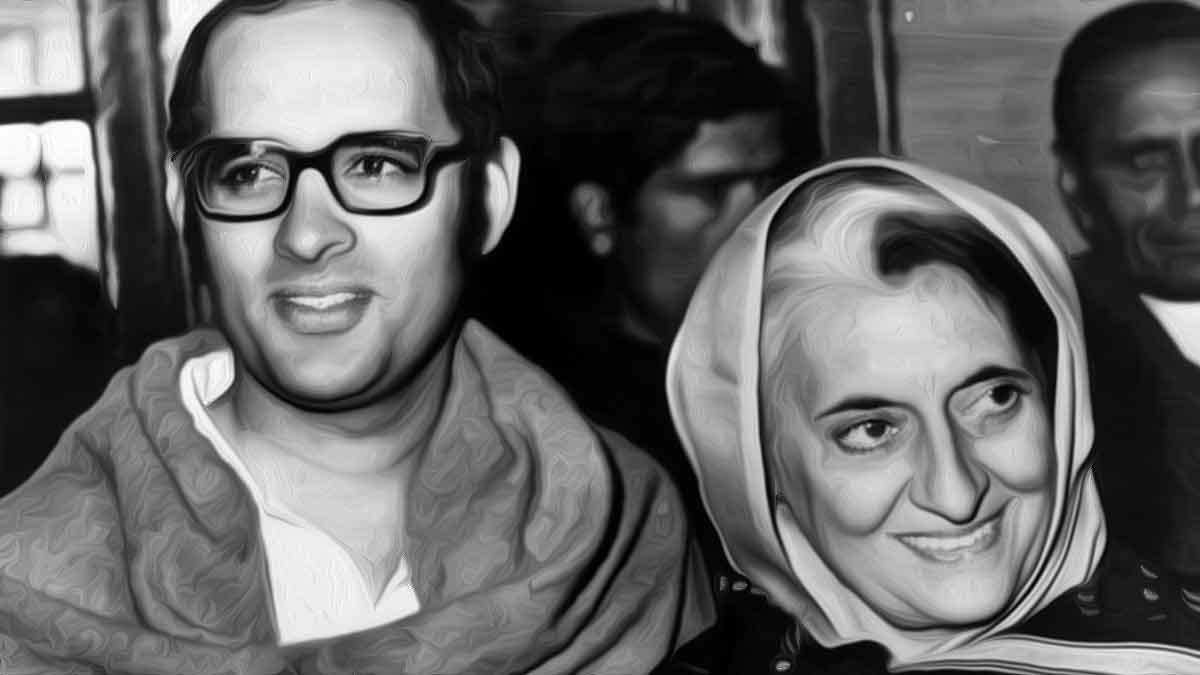 |
rivals, divided the grand old party and emerged completely victorious in the 1971 parliamentary election, with a stunning two-thirds majority in the Lok Sabha.
Suspicious and manipulative, Indira Gandhi had a history of abruptly changing advisers. The triumvirate of Ray, Barooah, and Patel were the current favourites among her left-leaning advisers. But, at the same time, plain gofers who had no intellectual pretensions or ideological constraints, like Yashpal Kapoor, Om Mehta, Bansi Lal, RK Dhawan, and the yoga guru Dhirendra Brahmachari, among others, also wielded influence. The ‘Punjabi mafia’, as it was nicknamed, had cultivated her son Sanjay to get ahead. In the crisis facing
Mrs. Gandhi, Sanjay had emerged as his mother’s most trusted confidant. Sanjay was then just twenty-eight.
While Indira Gandhi claimed, for public consumption, that she would resign if the stay in the Supreme Court went against her, Sanjay was adamant that there was no question of his mother stepping down because of a pettifogging judge. Sanjay swung straightaway into action on 12th June itself when he heard of the court judgment in the afternoon, after returning home for lunch from the Maruti factory. He indignantly vetoed Barooah’s self-serving proposal that he assume the prime ministership temporarily and Mrs. Gandhi takes over as president of the party.
Sanjay, unlike his more pragmatic mother, was a diehard believer in capitalism who looked with deep suspicion at all communists, including the left-leaning triumvirate whom his mother turned to for advice. Sanjay, his doting mother acknowledged, was a doer, not a thinker. He was a young man in a hurry, impatient with what he considered the hypocrisies of political correctness.
Sanjay had gathered around him a tiny band of loyalists who were part of his inner coterie. They included a junior-level Union Territory–cadre IAS officer Navin Chawla, who was an old friend from Sanjay’s days in England. At Chawla’s suggestion, a retired Indian Civil Service (ICS) officer, Kishan Chand, had been appointed the Lt Governor of Delhi, and Chawla himself became the Lt governor’s PS. Others in this inner circle included BR Tamta, the municipal commissioner of Delhi, PN Behl, the chief of New Delhi Municipal
Committee (NDMC), who later joined the prime minister’s office (PMO), and Jagmohan, vice chairman of the Delhi Development Authority (DDA), who was a law unto himself in the Delhi administration. PS Bhinder—deputy inspector general (DIG) (Range) of the Delhi Police, who had earlier been posted in Gurgaon and thus come into contact with Sanjay—was also part of this charmed circle.
The most powerful of all was RK Dhawan, Mrs. Gandhi’s unctuous additional private secretary who had made himself indispensable to both Mrs. Gandhi and Sanjay. Dhawan’s presence was particularly resented by the prime minister’s secretary, the economist PN Dhar. Dhawan later claimed in his defense, ‘I never did anything on my own. If I called someone to give orders I did not say the PM desires it. It was understood I was following her orders.’
A day after the fateful judgment, a meeting of Congress MPs, chief ministers, and ministers proclaimed that Indira Gandhi must continue to lead the party and the country. The lone dissenter was Mohan Dharia, who had lost his ministership three months earlier for urging Mrs. Gandhi to reach a compromise with JP Dharia’s suggestion that Mrs. Gandhi should resign was shouted down. But behind Mrs. Gandhi’s back it was a different story. While publicly expressing support for her, many Congress leaders whispered privately that Mrs. Gandhi should indeed step down.
The Opposition, meanwhile, had stepped up the agitation, calling for Mrs. Gandhi’s resignation. Even the media by and large urged Mrs. Gandhi to respect the court’s verdict and bow out of office gracefully.
Those who saw Indira Gandhi regularly during this period observed that she was severely rattled and frequently lost her temper. Her supporters were conscious that she could be betrayed and let down by her party members, and so they acted with speed and determination. By the time the Congress Parliamentary Party met on 18th June, most of the doubting Thomases had fallen in line. At a specially convened meeting, the entire gathering reaffirmed its faith in her. The MPs all signed a loyalty pledge which stated, ‘Mrs. Indira Gandhi continues to be the Prime Minister. It is our firm and considered view that for the integrity, stability, and progress of the country, her dynamic leadership is indispensable.’
The resolution was proposed by Jagjivan Ram and seconded by Y.B. Chavan, the two senior ministers in her cabinet who were suspected of nursing ambitions of stepping into Mrs. Gandhi’s shoes. Five members did not attend Chandra Shekhar, Krishan Kant, Mohan Dharia, Lakshmi Kantamma, and Ram Dhan.
They objected to the use of the word ‘indispensable’ in the loyalty pledge. D.K. Barooah, the rotund sycophantic party president, described contemptuously by Sanjay as a ‘joker’, declared ‘Indira is India and India is Indira’, a refrain which sounded ominously similar to the Nazi slogan ‘Germany is Hitler and Hitler is Germany’.
People from all walks of life, including leading industrialists, professionals, chambers of commerce, and various federations and associations, were encouraged to sign the loyalty pledge, which was drafted by PN Haksar, her former principal secretary, now relegated to the sidelines in the Planning Commission. Some dramatically signed the pledge in blood.
It was Sanjay’s coterie that went into overdrive to protect his mother’s position. Between 12th and 24th June, daily pro–Indira Gandhi demonstrations, rallies, and public meetings were held, the usual rent-a-crowd shows organized by Congressmen keen to win brownie points from the party bosses.
On 13th June, the entire fleet of 983 buses plying on Delhi routes was diverted to bring the crowds to No. 1 Safdarjung Road, the residence of the prime minister. People from the neighbouring states of Haryana, Punjab, Rajasthan, and UP were similarly transported in vehicles commandeered by their respective state authorities. Some participants carried banners of the unions of the public sector undertakings with which they were affiliated. Factories in Faridabad were viewed as a fertile catchment area by Bansi Lal, whose officials were ordered to muster crowds from there.
The crowds would usually assemble at the Safdarjung Road traffic island outside the prime minister’s residence. I was one of the reporters sent to cover these ‘solidarity’ rallies. We used to jokingly refer to Mrs. Gandhi’s standard diatribe as the ‘They-are-out-to-get-me rant’. The crowds were frenzied, almost hysterical, a number of the women thumping their chests and screaming, in chorus, ‘Indira, ham tumhare saath hain’ (Indira, we are with you). The obsequious court jester Barooah composed a couplet for the benefit of the rank
and file: ‘Indira teri subah ki jai, Indira teri shaam ki jai / Tere kaam ki jai, tere naam ki jai’ (Indira, we salute your morning, your evening, your name and your great works). Several times a day, Indira Gandhi would emerge from her bungalow and make an appearance for a few minutes for the gathering of the faithful. Holding her sari border tightly over her head and standing on a footstool, she would address the motley crowds in a high-pitched voice, with her eyelids twitching with a nervous tic. Invariably, her message was: I shall serve my country till my last breath. ‘The real issue is not whether Indira stays or goes.
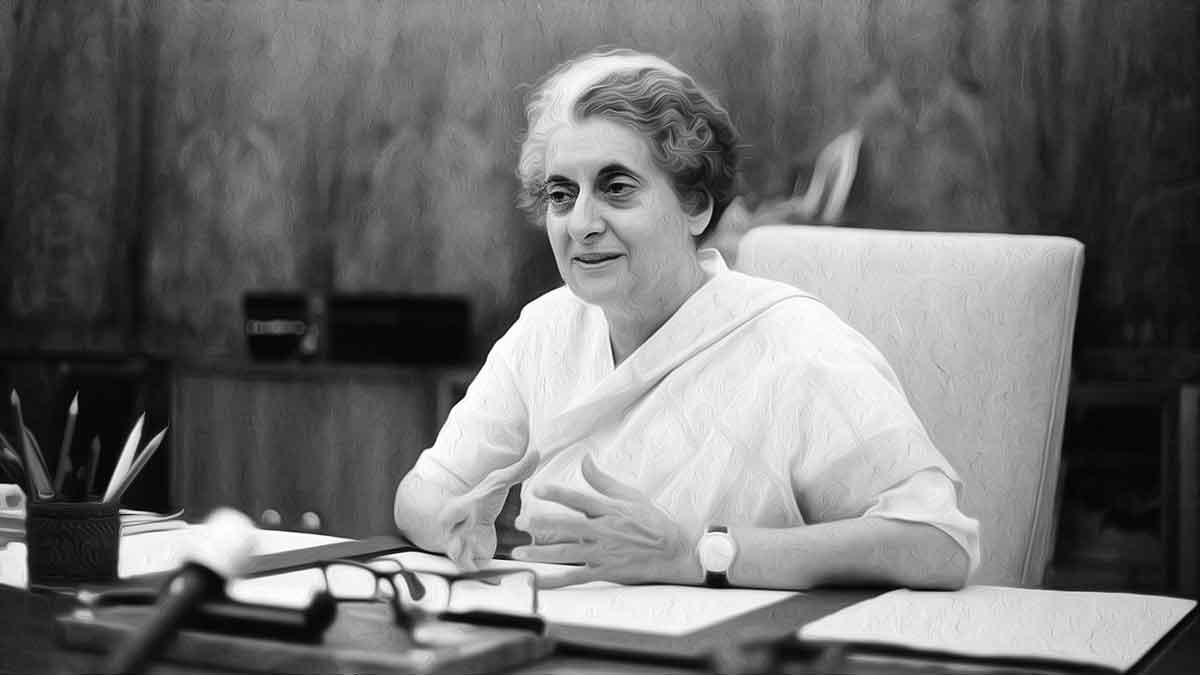 |
It is whether the country will follow the socialist policies that we launched four years ago,’ she would declare. An effigy of Justice Sinha was burnt by some of Mrs. Gandhi’s overzealous supporters.
She believed a conspiracy was being hatched by self-serving opposition politicians who were hand in glove with foreign interests. The CIA was the favourite bogeyman of the Congress party in those days. So much so that the opposition leader Piloo Mody once sported a badge in Parliament, which said ‘I am a CIA agent’, to mock Mrs. Gandhi’s oft-repeated charge.
The most spectacular show of strength by the Indira camp was at the Boat Club lawns on 20 June where the dependable Bansi Lal outdid himself in mustering numbers. He had ordered all police stations in his state to commandeer trucks and buses to transport men and women from their respective areas. In addition to the Haryana contingent, Congress cheerleaders were lugged in by train from all parts of the country. There were an estimated one million people at the rally that day.
In her speech, Gandhi thundered that powerful vested interests were at work not only to oust her but to liquidate her physically. These vested interests, she claimed, had the backing of the press and enjoyed unique freedom to distort facts and spread lies. ‘The question is not whether I die or live, but one of national interest.’ In a display of family solidarity, both her sons, Rajiv and Sanjay, and daughters-in-law, Sonia and Maneka, sat with her.
A sea of humanity covered the lawns on either side of Rajpath. The day-trippers from the neighbouring states, who were in a holiday mood, brought the city to a halt as they flooded the roads of New Delhi after the rally, visiting the tourist spots of the capital. On 24 June things took a turn for the worse for Mrs. Gandhi. As mentioned earlier in this chapter, the vacation judge Justice Krishna Iyer turned down her plea for an absolute stay on the Allahabad High Court judgment until the Supreme Court disposed of her appeal. Justice Iyer granted only a conditional stay: Mrs. Gandhi could continue as prime minister but could not vote in Parliament nor draw an MP’s salary. Iyer’s ruling was greeted as a fresh victory for the Opposition. MPs from the Opposition now called on the President to demand that Mrs. Gandhi step down from office. She in turn decided that she must now crackdown on her opponents without further delay.
On the afternoon of 25 June, all arrangements for the impending arrests of political leaders were discussed in Dhawan’s room in the presence of Bansi Lal, Om Mehta, and the superintendent of police of the Crime Investigation Department, the SP (CID), Delhi administration, K.S. Bajwa. Subsequently, Lt Governor Kishan Chand called a meeting at 7.30 p.m. at which the chief secretary J.K. Kohli, the inspector general (IG) of police, Bhawani Mal, and DIG (Range) Bhinder were present. The chief secretary visited Tihar jail an hour later and checked on the accommodation there. He informed the superintendent of the jail that 200 ‘Naga prisoners’ could be expected by the next morning. Sanjay Gandhi and his cohorts were impervious to constitutional and legal niceties in making arrests. The outspoken Bansi Lal advised Mrs. Gandhi, ‘Behenji, give them to me and I will set them right.’12 It was clear that Sanjay had a stronghold over his mother. While Mrs. Gandhi was in conference with the officials, Sanjay used to interrupt her frequently. ‘Mummy, come for a moment,’ he would say, and Indira Gandhi would quietly leave the room to confer with her son. Sanjay was in regular touch with the chief ministers from north India. But, unlike Sanjay and Bansi Lal—who declared that Mrs. Gandhi was being too soft in dealing with her opponents—the prime minister was anxious that her draconian plan be clothed in legal cover. She turned to her legal expert, Siddhartha Shankar Ray. The Oxbridge-educated Ray was a distinguished lawyer who could be relied upon to present his arguments with polish and sophistry. Although the chief minister of West Bengal, Ray in those days came to Delhi practically every week. And after the Allahabad judgment, he had been summoned to the capital to be on hand to provide expert legal advice.
Mrs. Gandhi explained to him that the country needed ‘shock treatment’ and extraordinary powers were required by the government to keep the threat at bay. She had advanced information that JP at his rally would be calling for a mass movement all over India. She feared India was drifting towards chaos and anarchy. Ray promised to study the relevant sections of the law and recommend the best course of action. He borrowed a copy of the Constitution from the Parliament House library and later claimed he was shown Intelligence Bureau (IB) reports on the serious law-and-order problems facing the nation. (In fact, the IB had not submitted any report to the home ministry between 12th and 25th June 1975 suggesting that there was a problematic situation on the law-and-order front.)
This was Ray’s defense later before the Shah Commission (which was set up by the Government of India in May 1977 to inquire into all the excesses committed during the Emergency). But the letter he wrote to Mrs. Gandhi on 8 January 1975 indicates that he had conceived the idea of an internal Emergency and jailing political opponents much earlier. His claim that the idea of imposing an internal Emergency was conceptualized in the few hours given to him to study the Constitution on 25 June was simply to cover up his role as the initiator of the sinister move.
Ray proposed that although Emergency laws already prevailed ever since the 1971 war with Pakistan, these related to an Emergency imposed due to an external threat. He recommended imposing a second Emergency under Article 352 of the Constitution, to deal with an internal threat. Mrs. Gandhi asked Ray to accompany her to meet President Fakhruddin Ali Ahmed. She repeated to the President what she had told Ray about India drifting into anarchy, and he asked her to make her recommendations.
Mrs. Gandhi had an additional query for Ray. Could she recommend a decision to the President without first consulting her cabinet? Ray obligingly looked up the Business Rules and concluded that she was empowered to act on her own under Rule 12 and depart from the normal convention of first consulting her cabinet. (This suggestion is also mentioned in Ray’s 8 January letter.) After helping Mrs. Gandhi draft her speech for broadcast the next day, Ray left the room and bumped into Om Mehta, who informed him
that orders had been passed to lock up the high courts and cut off electricity connections to all newspapers. Ray was perturbed and cited a law under the Emergency that no action could be taken until rules were framed. He insisted on meeting Mrs. Gandhi again. While he was waiting, Sanjay met him in a highly excitable state and ticked him off rudely, saying he did not know how to run the country. The no-nonsense Sanjay disliked Ray, whom he considered a pseudo-communist.
Ray tried to pacify him, stating he should not interfere in what was not his sphere.15 Later when he met Mrs. Gandhi, he thought she looked red-eyed. She assured him the drastic measures suggested by Sanjay would be stopped.
Sanjay, however, had his way regarding the disconnecting of electricity supply to newspaper offices. Brahmananda Reddy, former chief minister of Andhra Pradesh and a power to reckon with in his home state, felt humiliated and sidelined as home minister in Delhi. Nobody had bothered to consult him. The joke in the government was that the home ministry was referred to as the ‘Om ministry’ because it was Om Mehta—who was part of Sanjay’s coterie and had earned a reputation as a tale carrier—who called the shots.
Reddy was summoned to the prime minister’s residence at around 10.15 p.m. on 25th June and informed that there was a deteriorating law-and-order situation in the country and it had become necessary to impose an internal Emergency. He pointed out that since an external Emergency was already in place, the powers were sufficient. When Mrs. Gandhi replied that it would be wiser to go for a second Emergency, he did not argue the point. He said she must do what she thought fit. He signed a letter to the President, referring to the conversation between the prime minister and Fakhruddin Ali Ahmed earlier in the day, and appended the draft proclamation of the Emergency for the President’s assent along with his letter. The letter was on a plain sheet of paper and not even on the letterhead of the home minister of India.
The President’s Secretary, K. Balachandran, would later confirm (before the Shah Commission) that a Top Secret letter from the prime minister to President Fakhruddin Ali Ahmed was received at around 10.30 p.m. that night. It referred to the discussion the prime minister had had with the President earlier in the day. She asked that if the President was satisfied, a proclamation under Article 352(1) of the Constitution be declared. When Balachandran was shown the letter he suggested to the President that it would be constitutionally wrong for him to act in the manner suggested as he had to act on the advice of the council of ministers. He pointed out that the letter was worded in a manner to indicate that the decision to declare the Emergency was that of the President. The President seemed to agree with his argument and called up the prime minister. But after Ahmed spoke to Mrs. Gandhi his reservations melted away. After all, he owed her an enormous debt of gratitude for installing him as President. In the brief intervening period, the ubiquitous Dhawan called on the President and delivered the draft of the proclamation of the Emergency for his signature. Ahmed signed the document around 11.45 p.m. and returned it to Dhawan, who recalls that, contrary to Balachandran’s claim, Ahmed did not demur in the slightest at the wording of the ordinance when it was shown to him.16
The proclamation of the Emergency was brief and read as follows:
In exercise of the powers conferred by clause 1 of Article 352 of the Constitution, I, Fakhruddin Ali
Ahmed, President of India, by this Proclamation declares that a grave emergency exists whereby the
security of India is threatened by internal disturbances.
PRESIDENT
New Delhi – 25th June 1975
Mrs. Gandhi did not consult her cabinet before the imposition of the Emergency because she trusted them as little as she did her opponents in the Opposition. Such was the Byzantine atmosphere of intrigue surrounding her court that her ministers, in turn, were convinced that she was spying on them. Jagjivan Ram believed his phone was continuously tapped and later claimed his extreme caution and silence during the Emergency was because he knew the PM had assigned people to keep tabs on him. Another minister, exercising abundant precaution, put a tea cozy over his telephone for fear that his phone was bugged and his conversations were being listened to. Mrs. Gandhi treated her ministers with such contempt that she did not convey instructions to them directly but let her office staff, usually, Dhawan, act as messengers. Of all her ministers Mrs. Gandhi was most suspicious of Jagjivan Ram who considered himself the seniormost minister in the cabinet and the one who seemed most likely to take charge in case she stepped down. In 1969 he had stuck with Indira when the rest of his senior Congress colleagues had joined the camp against her, referred to as ‘the Syndicate’. She in turn had forgiven him for his ‘memory lapse’ in forgetting to pay his income tax for ten years.
Jagjivan Ram, who belonged to a Scheduled Caste, was rumoured to have the support of some eighty Scheduled Caste MPs. Mrs. Gandhi, fed by IB reports, believed correctly that he was in touch with the Young Turk rebels in the party like Chandra Shekhar and Ram Dhan, who were sympathetic to JP’s movement. In fact, Chandra Shekhar had hosted a dinner for JP which was reportedly attended by some fifty Congressmen. The fact that JP had once referred to Jagjivan Ram as an able and efficient minister probably added to Mrs. Gandhi’s suspicions. Immediately after the Justice Sinha judgment, Jagjivan Ram conveyed to some Young Turk party colleagues that he felt Mrs. Gandhi should resign. But he backtracked when he found Mrs. Gandhi in complete control.
When Kuldip Nayar of the Indian Express called on Jagjivan Ram on the morning of 26 June, Jagjivan Ram was jittery and expressed fears for his own safety. Y.B. Chavan, the strongman of Maharashtra, was another who nursed dreams that the judgment voiding Mrs. Gandhi’s election could turn into an opportunity for him. But Chavan was too intimidated by Mrs. Gandhi to take any initiative for him. But Chavan was too intimidated by Mrs. Gandhi to take any initiative to seize power.
When Indira Gandhi’s ministers were woken up at 5 a.m. on 26 June and summoned for a cabinet meeting, there was bewilderment as to what it was all about. But when the cabinet met a little after 6 a.m. no one raised a whimper of protest except, surprisingly, the mild-mannered defence minister, Swaran Singh. Mrs. Gandhi announced that the proclamation of the Emergency had become imperative because the law-and-order situation in the country was getting out of hand. The home secretary S.L. Khurana, who was also out of the loop till the very end, read out the proclamation and Om Mehta explained the background. Swaran Singh inquired about the need for a second Emergency when there
was already an external Emergency in operation. The prime minister responded in a manner that suggested that he should have known better than to ask superfluous questions. Swaran Singh was never able to live down his act of temerity in questioning the PM. He has stripped of the defense portfolio shortly afterward. Mrs. Gandhi described JP’s speech of the previous night as highly inflammatory. She also informed the gathering of the imposition of censorship.
The cabinet meeting lasted barely fifteen minutes. Meanwhile, the next stage of the Emergency plan had already been set in motion.
References:
The Emergency - A Personal History - Coomi Kapoor
 Support Us
Support Us
Satyagraha was born from the heart of our land, with an undying aim to unveil the true essence of Bharat. It seeks to illuminate the hidden tales of our valiant freedom fighters and the rich chronicles that haven't yet sung their complete melody in the mainstream.
While platforms like NDTV and 'The Wire' effortlessly garner funds under the banner of safeguarding democracy, we at Satyagraha walk a different path. Our strength and resonance come from you. In this journey to weave a stronger Bharat, every little contribution amplifies our voice. Let's come together, contribute as you can, and champion the true spirit of our nation.
 |  |  |
| ICICI Bank of Satyaagrah | Razorpay Bank of Satyaagrah | PayPal Bank of Satyaagrah - For International Payments |
If all above doesn't work, then try the LINK below:
Please share the article on other platforms
DISCLAIMER: The author is solely responsible for the views expressed in this article. The author carries the responsibility for citing and/or licensing of images utilized within the text. The website also frequently uses non-commercial images for representational purposes only in line with the article. We are not responsible for the authenticity of such images. If some images have a copyright issue, we request the person/entity to contact us at This email address is being protected from spambots. You need JavaScript enabled to view it. and we will take the necessary actions to resolve the issue.
Related Articles
- Wikileaks and 5 lesser know facts of Indira Gandhi: Nuclear technology, corruption and foreign relations
- Saam Daam Dand Bhed: How Indira and Sanjay Gandhi pulled off the Maruti scam
- How Political ambitions of the Congress has silenced contributions of uncountable freedom fighters
- Can Communism and Democracy Coexist - 100 Years of Russian Revolution
- "कालाध्याय": Dive into the harrowing story of Snehlata Reddy, who endured unjust imprisonment & torture during the Emergency, bravely resisting Indira Gandhi's regime until her tragic death just days after being released from prolonged, harsh captivity
- When in a special referendum in 1975 people of Sikkim chose India over monarchy to become the 22nd State of the Indian Union: Rule of the Chogyal king and his mysterious American Wife Hope Cooke ended
- Rajiv Gandhi didn't call Army for 3 days, had no intention to stop 1984 Sikh massacre: Watch his speech justifying the riot
- “A river seems like a magic thing. Magic, moving, living part of earth itself”: Maharaja Ganga Singh, also known as Bhagirath of Kalyug who made Sutlej river of Punjab flow in the desert by constructing 'Ganga-Canal' that Congress renamed to Indira Canal
- How Communists betrayed India - 100 Years of Russian Revolution
- Ghost from the past: Unseen picture of Nehru voting in favour of partition of India goes viral
- Rare footage of Pakistan Army surrendering to Indian Armed Forces after the humiliating defeat in 1971 war: Vijay Diwas
- Indira Gandhi’s bahu published intimate photos of Jagjivan Ram’s son in her magazine: This 'Saas-Bahu ki Saajish' mothered India’s first major political sex scandal which cost Jagjivan his political career
- “Dharma is law in its widest sense—spiritual, moral, ethical and temporal": How Chanakya's Arthashastra shaped the Telling of Ancient Indian History and should be read simply for its sheer brilliance in the area of statecraft and economics
- Depth of Soviet penetration in Indian media is exposed through declassified CIA document from 2011
- "Behold it is born. It is already sanctioned by the blood of martyred Indian youths": Madam Bhikhaiji Cama, the Brave lady to first hoist India’s flag on foreign Soil - Formative Years
Related Articles
Twitter Coverage
Satyaagrah
Written on
Satyaagrah
Written on
Satyaagrah
Written on
Satyaagrah
Written on
Satyaagrah
Written on



